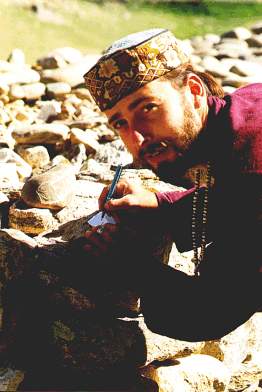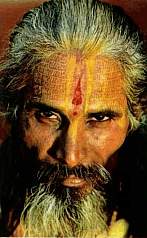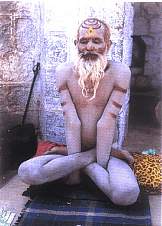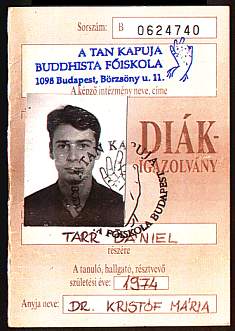 |
ORIENTAL
STUDIES
| 
|
I
received scientific and traditional education for four
years at the Gate
of Dharma Buddhist College
in Budapest,
where I have studied Buddhism besides Hindu, Chinese and
western philosophy. I specialized on the study of Buddhist
philosophy and Eastern thought. I also studied philosophy
of religion specializing on Indian culture and Indian
religions. I wrote my thesis on Hindu Tantra.
I
got so deeply involved, that after finishing my MA, I
have decided to stay with the institution and become a
teacher of Buddhism myself. Since 1995 I have been teaching
a number of different Buddhist subjects as well as doing
research into early Buddhism. My major field of interest
is Tantric Buddhism - especially the cross-cultural interference
of Hindu and Buddhist philosophy and religious practice. |

»
Check out The Gate of
Dharma Buddhist College Website


Hindu-Buddhist
Tantra
| I
have been on two expeditions to the Himalayas both
carrying interests for Buddhist research and cultural
anthropology.
A
part of my first journey took me to Western
Tibet,
to the Buddhist kingdom of Ladakh
in 1995.
A
part of my second journey took me to Western Tibet
again, to the Buddhist kingdoms of Lahaul
and Spiti
and Zanskar
in 1998.
Politically
these areas all belong to India, therefore survived
the devastating effects of the Chinese intervention
in Tibet and since represent an ideal research area
of relatively untouched Buddhist culture.
I
have also studied some of the monasteries and settlements
of Tibetan refugees in Himachal
Pradesh
(India) and the Kathmandu-valley
(Nepal). |
|
| 
|
I
have been to more than 50 Buddhist monasteries studying
and experiencing the monastic way of life. »Interested?
Check it out... |
| 
|
I
have visited a high number of Tibetan settlements studying
Tibetan Buddhist culture. »
Interested?
Check
it out... |
| 
|
I
have visited more than a 130 Hindu temples in Northern-India
and the Kathmandu-valley in Nepal. » Interested?
Check it out... |
| 
|
My
research involved documentation (film and photo) of
a number of Hindu and Buddhist topics. »
Interested? Check
it out... |
Top


The
followers and practices of Hindu Tantra
| |
In
my thesis I carry out an introductive analyses of the
followers and practices of Hindu Tantra. I start with
a brief analyses of the development of Hindu thought and
trace the tantric tradition back to pre-aryan times to
the dravida people of the Indus Civilization. I argue
that the tantric tradition is older than Vedic Hinduism
and constitutes the basic teachings of both the Puranic
Hindu culture and folk religions especially on the side
of fertility cults. I than argue that indian ascetics,
widely known as sadhus, are the living representatives
and followers of the tantric tradition. I also emphasize
that orthodox Hinduism based on the teachings of the Vedas
and represented by the priest cast of brahmins;
and non-orthodox Hinduism based on tantric practice and
represented by the cast of sadhus strongly differ
and have their own two ways and entirely seperate traditions...
I
try to reconstruct the picture of the early ascetics and
create my own list of early sadhu sects: I write about
the pashupata, kapalika and kalamukha
sects in detail and try to distinguish them from other
contemporary ascetic sects like the bhikshu (Buddhist),
jaina and ajivika sects. |
| My
argument leads to the clear distinction of the samayin
or "right hand path" and the kaula or
"left hand path" tradition in tantric though
and practice. I argue that this tradition is the ground
for the Puranic Hindu concept of Trimurti - the trinity
of God: Brahma the Creator, Visnu the Preserver and Siva
the Destroyer. I see the same tradition in reflected in
the beliefs and practices of sadhu sects.
Following
Dolf
Hartsuiker's line of thought I distinguish the
two major trends of vaisnava and saiva line:
sects following Lord Visnu and sects following Lord Siva.
I give an enumeration and short description of the sects:
the naga, goraknath, aghori, udasin and sakta
on the saiva side and the ramanuji, ramanandi, gauriyi,
bairagi and rasik on the vaisnava side.
I
also shortly describe the bhakti and lingayat
movement and also write about early Buddhist (sarvastivada
and sammitiya) and Jain (digambara and svetambara)
groups. To make the picture complete I describe the institution
of the Guru and introduce some of the notorious gurus
who made a great impression on the West: Radnish, Maharishi,
Muktananda, Sai Baba, Prabhupada and Acarya. Their main
doctrines are also touched upon... |
| The
second part of my paper deals with the lifestyle and practices
of the sadhu sects. I write about the general daily routine
of leading an ascetic way of life and the ideology that
lies behind the acts of sadhana.
I
then give my own interpretation of Yoga, seeing it as
a complex system of exercises aiming at the final act
of liberation. I distinguish four major disciplines of
yoga: Hatha-, Laya-, Raja- and Tantra-yoga and make an
enumeration of various exercises and rituals practiced
by the different sects and place them in the system, claiming
that each particular exercise belongs to a special kind
of yoga which has its own way of achievement...
My
original intention was to write about all the exercises
practiced by most sadhu sects, but as is a lifetime's
work, I had to narrow the topic down to two types of yoga
- hatha-yoga and tantra-yoga - mainly practiced by most
saiva sects. |
|
| In
considering the hatha-yoga exercises in addition
to the traditional philosophical explanations, I write
about how to cleanse the body (satkarma); about
different postures and ways of concentrating (asana
& mudra); about withdrawing the senses (pratyahara);
and activating the subtle energy systems (pranayama
& nadicakra).
In
connection with the tantra-yoga exercises in addition
to the traditional philosophical explanations, I write
about mastering pleasure (sukha bhoga); mastering
ecstasy (cakra-puja & panca-makara);
and mastering magical powers (siddhi). I take some
time on writing about the traditional usage of psychedelic
drugs in the sadhu tradition and on the nature of sexual
intercourse as a religious practice.

|
Top

Here
is the outline of my thesis-paper (available
in Hungarian in the »
Library)
| The
followers and practices of Hindu Tantra
-
Ascetics
(sramana, muni, sadhu, yogi, siddha, tantrika)
-
Hermits
(sanyasi, saiva and vaisnava)
-
Bhakti
(alvar, lingayat)
-
Buddhist
sangha (sthavira vada, maha sanghika)
-
Jain
gana (digambara, svetambara
-
Gurus
(Radnyis, Maharisi, Muktananda, Sai Baba,
Prabhupada)
-
Satkarma
-
Asana
& Mudra
-
Pratyahara
-
Pranayama
& nadi-cakra-abhyasa
-
Sukha-yoga
(bhoga)
-
Cakra-puja
(panca-makara)
-
Siddha-yoga
(siddhi)
|
 Interested?
Write and
I will send you a copy.
Interested?
Write and
I will send you a copy.
All
written documents are available for reading in the »
Library.
I
also wrote my Cultural Anthropology thesis on
»
The
Cult of Siva.
Top

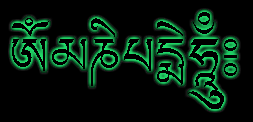
Course
Description
BA
equivalent course in Philosophy of Religion
(Autumn 1993 –
Spring 1997)
Courses
in Classic Philosophy
(Department of Philosophy
of Religion)
| |
Name
of course |
Teacher
|
Grade
|
| Classic
Greek Philosophy |
Lőrincz
Imre Farkas |
A
level (5) |
| Classic
Greek Philosophy II. |
Lőrincz
Imre Farkas |
A
level (5) |
| History
of Philosophy I. |
Bakos & Fórizs
& Ruzsa |
B
level (4) |
| History
of Philosophy I. seminar |
László Fórizs |
A
level (5) |
| History
of Philosophy II. |
Bakos & Fórizs
& Jancsik |
A
level (5) |
| History
of Philosophy II. seminar |
László Fórizs |
A
level (5) |
| Philosophy
of Religion |
Lőrincz
Imre Farkas |
A
level (5) |
| Philosophy
of Religion II. |
Lőrincz
Imre Farkas |
A
level (5) |
| Philosophy
of Nature |
József Bakos |
A
level (5) |
| Philosophy
of Nature II. |
József Bakos |
A
level (5) |
| Name
of course |
Teacher
|
Grade
|
| Chinese
Philosophy |
Lőrincz
Imre Farkas |
A
level (5) |
| Chinese
Philosophy II. |
Lőrincz
Imre Farkas |
A
level (5) |
| Hermetic
Philosophy |
József Bakos |
passed |
| Hermetic
Philosophy II. |
József Bakos |
A
level (5) |
| Logics |
Ferenc Ruzsa
|
passed |
| Logics
seminar |
Gábor
Karsai |
A
level (5) |
| Aesthetics |
Károly Jancsik |
passed |
| Aesthetics
II. |
Károly Jancsik |
A
level (5) |
| Comprehensive
Exam of Western Philosophy |
|
A
level (5) |
Special
Courses in the Philosophy
of Religion
| Name
of course |
Teacher
|
Grade
|
| Hermetic
Philosophy III. |
József Bakos |
A
level (5) |
| Hermetic
Philosophy IV. |
József Bakos |
A
level (5) |
| Scholastic
Philosophy |
József Bakos |
passed |
| Mythology |
József Bakos |
A
level (5) |
| Ethnology
of Religion |
Gábor Vargyas |
passed |
| Ethnology
of Religion II. |
Gábor Vargyas |
A
level (5) |
| The
Philosophy of the Tao Te King |
József Bakos |
passed |
Buddhist
Philosophy
(Department of Buddhist Studies)
| Name
of course |
Teacher
|
Grade
|
| Hinayana
Buddhism |
András Laár |
A
level (5) |
| Hinayana
Buddhism II. |
András Laár |
A
level (5) |
| Theravada
Buddhist texts |
László Tenigl-Takács |
A
level (5) |
| Indian
Buddhism |
László Tenigl-Takács |
passed |
| Indian
Buddhism II. |
László Tenigl-Takács |
passed |
| Mahayana
Buddhism |
Tamás Agócs |
A
level (5) |
| Mahayana
Buddhism II. |
Tamás Agócs |
A
level (5) |
| Madhyamaka
Buddhism |
Judit Fehér |
A
level (5) |
| Yogacara
Buddhism |
László Tenigl-Takács |
A
level (5) |
| Yogacara
Buddhism seminar |
László Tenigl-Takács |
A
level (5) |
| Buddhist
Epistemology and Ontology |
Tamás Agócs |
A
level (5) |
| Comprehensive
Exam of Buddhist Philosophy |
|
A
level (5) |
Other
Buddhist courses
| Name
of course |
Teacher
|
Grade
|
| The
History of Tibetan Buddhism |
Katalin Jakab |
passed |
| Tibetan
Buddhism |
Tamás Agócs |
A
level (5) |
| The
History of Zen Buddhism |
Tibor Tátrai |
passed |
| Zen
Buddhism |
Róbert Hegedűs |
A
level (5) |
| Buddhist
enquiries |
Tamás Berhidai |
passed |
Hindu
Philosophy
| Name
of course |
Teacher
|
Grade
|
| Upanisad
Philosophy |
László Tenigl-Takács |
B
level (4) |
| Darshan
Philosophy |
Ferenc Ruzsa
& L. Takács |
A
level (5) |
| Darshan
Philosophy II. |
Ferenc Ruzsa
& L. Takács |
A
level (5) |
| Rig-Veda |
László Fórizs |
A
level (5) |
| Dissertation:
"The followers and practices of Hindu Tantra" |
|
A
level (5) |
Courses
in Tibetan Language
| Name
of course |
Teacher
|
Grade
|
| Classic
Tibetan Language 1. |
Mónika Szegedi |
C
level (3) |
| Classic
Tibetan Language 2. |
Mónika Szegedi |
D
level (2) |
| Classic
Tibetan Language 3. |
Mónika Szegedi |
B
level (4) |
| Classic
Tibetan Language 4. |
Mónika Szegedi |
C
level (3) |
Index
No.: C-93/46
Top


Essays
- The
followers and practices of Hindu Tantra (MA Thesis)
[Spring 1997]
- Hindu
Tantra [Autumn 1996] - [Schoolbook of the GDBC, 1996]
- Prăna-Ătman
[Autumn 1993] {Upanishad Philosophy}
- Hinayăna
Buddhism [Autumn 1997] - [Schoolbook of the GDBC, 1997]
- The
History of Mahayăna Schools [Autumn 1994] - [Schoolbook
of the GDBC, 1994]
- Vasubandhu
- The Teaching of the Three Selves [Spring 1996] {Yogacăra
Buddhism}
- Selflessness
and Emptiness [Spring 1995] {Mahayăna Buddhism}
- Lin-chi
[Spring 1994] {Zen Buddhism}
- Introduction
to Chinese Philosophy [Autumn 1993] {Chinese Philosophy}
- The
Philosophy of Lost Order [Spring 1994] {Antique- and Chinese
Philosophy}
- Presocratic
Thought - The Philosophy of ONE [Autumn 1993] {Antique Philosophy}
- Aurelius
Augustinus [Autumn 1995] {History of Philosophy}
- Heidegger:
What is Metaphysics? [Spring 1996] {History of Philosophy}
- Ziqquratu
[Spring 1994] {Philosophy of Religion}
- Rabbi
Jesus [Autumn 1994] {Philosophy of Religion}
 Interested?
Write and
I will send you a copy.
Interested?
Write and
I will send you a copy.
All
written documents are available for reading in the »
Library.
Top

Want
to know more?
»
Check out
my work at The Gates of Dharma Buddhist
College
»
and Cultural
Anthropology studies too. |

|







